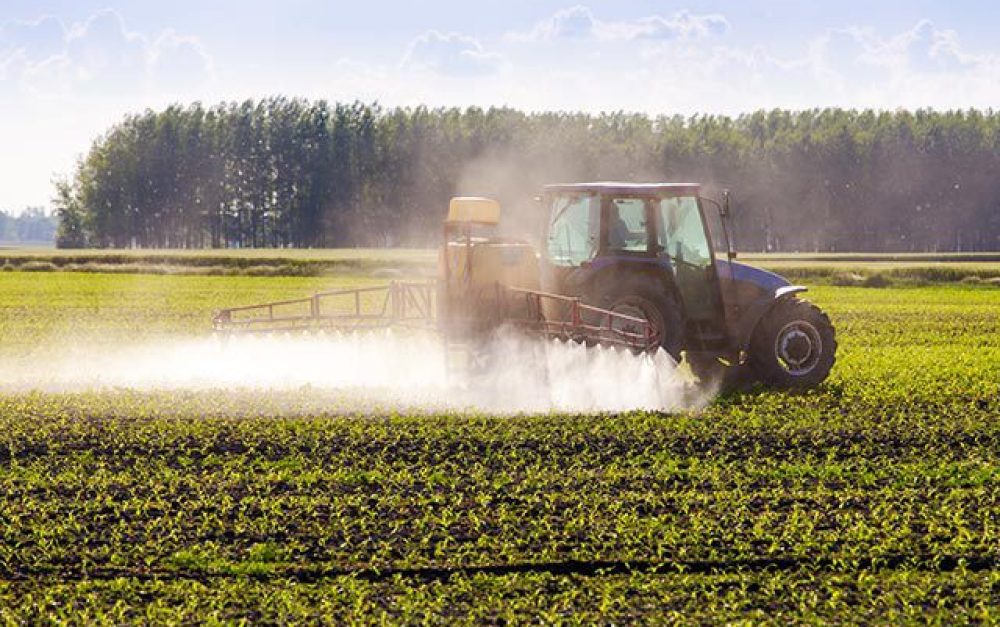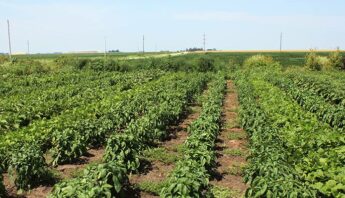Two weeks ago, I was speaking to a roomful of specialty crop growers and organic farmers from Indiana. They were concerned about the pesticide drift that is expected to accompany the planting of Dow and Monsanto’s new herbicide-resistant corn and soybean seeds this spring. Presenting alongside me was Anita Poeppel of Broadbranch Farms, a family-owned and operated farm in north central Illinois.
Anita shared a message with her fellow growers: We need to be ready. If USDA allows these new GE seeds — that’ve been designed to be sprayed with highly toxic, drift-prone herbicides — onto the market, we are all going to be in a lot of trouble.
Exactly one week later, that trouble hit. On January 15th, USDA approved Monsanto’s dicamba-resistant GE seeds. And all signs indicate that EPA is moving swiftly to do the same with Monsanto’s dicamba herbicides that accompany these new GE seeds.
Pesticide drift — about to get a lot worse
USDA’s latest decision pleased Monsanto immensely, but could hardly have been worse news for family farmers hoping to get off to a good start in 2015. The trouble with dicamba is twofold:
1. Dicamba is highly drift-prone: it is responsible for the 3rd highest number of drift-related crop damage incidents in the U.S. (2,4-D, is #1 on that list); and
2. Dicamba is extremely toxic to virtually all broadleaf plants (plants that are not grasses — such as fruits, nuts and vegetables, non-GE cotton and soybeans, and field-edge forb plants that provide critical habitat for pollinators and other beneficial species).
Pesticide drift occurs in two basic ways: spray drift (when pesticides are blown off their intended target at time of spraying) and volatilization drift (when the chemical evaporates in the days or even weeks after application, and can drift for miles before landing on — and often destroying — someone else’s crops). Dicamba does both.
Like its cousin 2,4-D, dicamba is a synthetic “auxin” herbicide, acting as an artificial plant hormone that disrupts the normal growth processes of a plant, resulting in deformed leaves, stems, roots, seed heads and ultimately plant death. For growers of vulnerable crops — such as tomatoes, lettuce, beans, grapes, peaches, sunflowers, peanuts, etc. — 2,4-D and dicamba drift pose quite possibly the biggest threat to their farms’ production and thus, their economic survival.
According to USDA and Monsanto projections, dicamba use in soybeans is expected to increase by up to 500 times now that Monsanto’s Xtend seeds have been approved. Its use on cotton will increase 14-fold. It’s no wonder that so many farmers are worried.
Farmers say: “not what we asked for”
A few days ago I spoke with Jody Herr, an Indiana family farmer, about USDA’s approval of Monsanto’s dicamba seeds. Herr farms 2,800 acres and has already experienced several incidences of 2,4-D and dicamba drifting from farms located miles away and damaging his vegetable crops. One year he lost 40% of his marketable fruit.
Tell USDA & EPA: Fix the broken system
With GE crops, USDA & EPA are putting corporate interests above farmers’ livelihoods. Tell them to stop. 
“These new dicamba crops are a real concern for us,” Herr told me. “We grow soybeans too, but we made a decision a while ago not to use these products, to avoid damaging our own and our neighbors’ crops. It’s more important that we can all continue to farm the land together, without harming each other in the process.”
Meanwhile, over 1,000 miles away in Lubbock, Texas, grape growers expressed their fears: “There is tremendous angst in the grape-growing industry at the potential damage from these compounds. It is extremely disquieting,” Bobby Cox, a wine consultant told Hearst News.
Even USDA admits that the agency isn’t on the right path, stating in its environmental review:
“While managing [weeds] with herbicides is a focus at present, [USDA] agrees this focus is not likely to provide for agronomic sustainability.”
Well, of course it won’t! We’ve already seen what nearly 20 years of reliance on Monsanto’s RoundUp has brought us: over 60 million acres of farmland infested with RoundUp-resistant “superweeds” and widely contaminated water and air. Meanwhile, weed resistance to 2,4-D and dicamba is already on the rise.
If USDA can see the writing on the wall for the herbicide treadmill, why doesn’t it show leadership in driving a transition towards agricultural sustainability?
Broken regulatory system
The simple inconvenient truth is that our regulatory system is broken. No agency is looking out for farmers, or at the bigger picture. No agency is considering — and making decisions based upon — the broader impacts of these pesticide-promoting GE crops on farmers’ livelihoods, and on the social and economic well-being and health of rural communities.
As my colleague, Linda Wells, explained recently:
“Both USDA and EPA set up an intentionally narrow scope for evaluating the potential harms posed by [these] crops and their pesticides — one that ignored the biggest problems and held up irrelevant factors as evidence of safety.”
While USDA acknowledges some of the social and economic impacts of introducing GE seeds that will drive up use of toxic pesticides like 2,4-D and dicamba, it ignores these factors when making its regulatory decisions. The agency justifies its approvals by arguing that the seed itself poses no “plant pest risk” — the only question the agency says it must answer. (Details of the regulatory contortions that USDA undergoes to escape taking responsible action are unpacked here by Doug Gurian-Sherman).
With a close-to-100% approval record since it started “regulating” GE crops in the 90s, the agency seems to have never met a GE seed — or a pesticide company — that it didn’t like.
Meanwhile, if you’re worried about pesticides, says USDA, well — EPA is responsible for handling that part of the equation. However EPA only considers a narrow set of indicators derived principally from industry lab studies, and fails to look at how pesticides affect communities under conditions of actual use, out in the real world.
Our public agencies can and must do more to protect our farmers, our rural communities and our health. Americans need a new, coherent, integrated approach to GE seed and pesticide regulation that protects all farmers’ livelihoods and health, not just the bottom-line of the Big 6 pesticide companies.
Photo: Dollar Photo Club | Justinb








